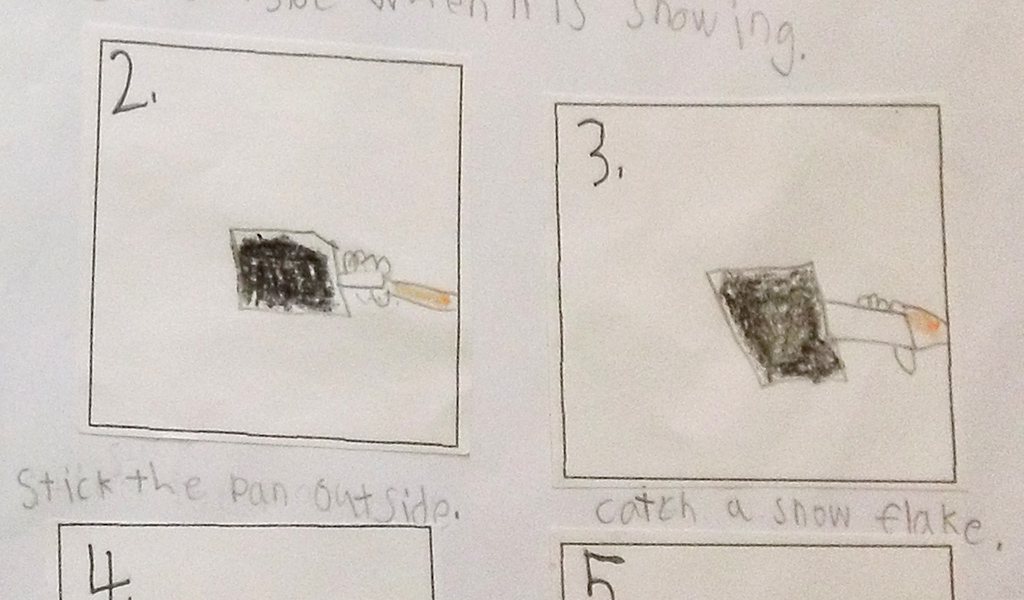Chapter 7: Nonfiction Is Not Just A Fancy Name For Fiction Reading And Writing Nonfiction In A Second-Grade Classroom
7.2 Pairing Fiction and Nonfiction

As we were planning this unit on nonfiction, Mrs. Kona reflected on her own reading of nonfiction. She remembered how reading The Lost Child of Philomena Lee caused her to stop and look at nonfiction sources to help her understand why Irish nuns back in the early 20th century forced young women to give up their children. Through this research she began to better understand the book and the characters. Because of her own experiences as a reader, Mrs. Kona felt strongly that “I cannot just hand my students nonfiction books they have no experience with… I have to help them create connections to bridge their interest and understanding.” This became her inspiration for pairing fiction with nonfiction.
Early elementary students certainly have more exposure to fiction and their literary diets are often mostly fiction. So, Mrs. Kona sought opportunities to create a sense of comfort and familiarity with nonfiction. One important way she did this was through her read aloud sessions. But another way was to bring in fiction books as a bridge, a way of making connections for students. On the one hand, she used fiction with nonfiction to introduce students to content area study. On the other hand, she used nonfiction to provide deeper understanding about a fictional narrative as with her own experience with Philomena.
Often, Mrs. Kona gathered her students to the carpet after lunch and recess and showed them the cover of a nonfiction book reading a short passage from it. She would read this piece to pull her students in, pique their interest and possibly build their knowledge for a topic they were about to read further. For example, she pulled out Feel the Wind to give the students some context about the wind that was going to be referenced in the fiction book, The Wind Blew. She only read a small excerpt but this nonfiction passage was a lure to excite and entice the children while providing them information about the wind and how it worked.
Other times, she would start with a fiction book and use it as a springboard into a nonfiction content area study. While reading the fiction book Gooseberry Park she asked her students about the ice storm in the story. Then, as a whole class, they created questions about the storm, which they then answered by searching for and reading numerous nonfiction books on storms, blizzards, and ice storms. In this instance and in others, she challenged the idea that nonfiction can only be used to gather information, instead using it as a way to help deepen their understanding of the fiction book. Thus, Mrs. Kona’s and the students’ co-construction of what it meant to be a reader of nonfiction, a researcher, and a nonfiction writer began with a bridge between two genres; it started with facts, with real life, and a deepening understanding of the fictional story through nonfiction.
However, asking students to pair fiction and nonfiction was difficult if the children could not read the texts. We noticed that some of the students struggled with the difficulty of the nonfiction texts, and Mrs. Kona acknowledged that the readability of the genre was one of the reasons she had been reluctant to use nonfiction in the past. At this point Mrs. Kona introduced me to what she called “considerate texts.”
What makes a nonfiction text considerate?
- Does the book provide visual scaffolding in the form of pictorial clues, headings, or captions?
- How much text is on the page. Is there too much?
- How difficult is the vocabulary? Are too may words to hard?
- If the main body of text is above the reading level of the reader, are the other textual elements helpful for the reader?
Mrs. Kona acknowledged that sometimes even “if the text was simple, the concepts [could be] very, very difficult.” For example, we originally selected Seymour Simon’s Tornadoes as a text to use in the weather unit, but quickly realized it was too text heavy and difficult for second grade students. Simon’s Super Storms ended up being a more considerate choice in terms of lexical density, terminology, and content. Consequently, stronger readers were able to read the text fluently while struggling readers were able to use the text features, photographs, and bolded vocabulary to help support their reading and understanding of the text. By using “considerate texts” we supported students as they worked, for example, with intimidating and indecipherable vocabulary like atmosphere and anemometer.
By pairing nonfiction and fiction books Mrs. Kona shifted the focus from an information processing model of using nonfiction books to one of exploring the genre to learn about and discover content that was interesting and sparked conversations.